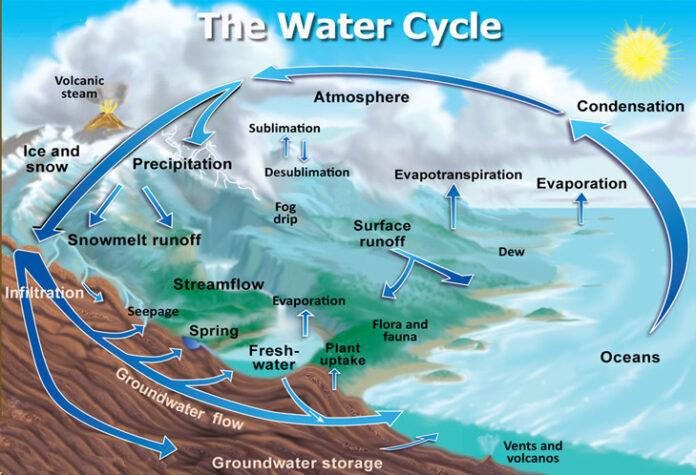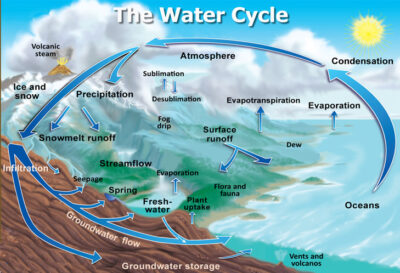
By Hannes Thum

Snow is a strange substance.
It should be simple. Snow is just crystallized water, and water is something we are quite familiar with. Water makes up a huge part of our diets and our bodies. Water is something we all touch and drink and interact with multiple times daily. It is one of the most foundational requirements for life (as we know it), it is one of the most significant shapers of our human history, and it may be one of the most central touchstones of literature and poetry and art and imagery that we have in our culture—water is everywhere.
And most of us aren’t surprised that water can freeze and crystallize. We see frozen water on our windshields on cold mornings, we slip on it in the driveway, and we even make it in our homes to add to our drinks. Ice forms on the creek outside my classroom every night, at this time of year. Ice hangs from the ends of gutters. We make it, plentifully and at will, when we want a sheet of it to skate on. In the winter, at least, it’s something that we see every day.
So, water isn’t surprising to us. And frozen water isn’t surprising to us. Snow, which is just tiny little crystals of frozen water, shouldn’t be surprising, either.
Yet, it is.
Two hydrogen atoms and one oxygen atom. A darn simple molecule. But there are some fascinating properties built into that tiny arrangement. For one, the angles at which the hydrogen and oxygen atoms align themselves create very specific shapes when the water molecules freeze, and this makes ice crystals very reliable at forming six-sided shapes. Thus, the hexagonal nature of most snow crystals—the beautiful, tiny works of art that we have all seen, formed in the sky.
Once snow is on the ground, all sorts of bizarre things can happen. Newly-fallen snow tends to be very fluffy. And by fluffy, I mean that it’s mostly air. Typical powder snow might be only 10 percent snow by weight—the rest is air (warmer snow is much denser, and much less fun to ski in). But as it sits under the radiation of the sun, and as wind blows it back and forth across the landscape, and as the heat from within the earth (don’t forget that there’s a whole bunch of magma down there) slowly affects it from the bottom up, those snow crystals change and metamorphose into all sorts of new configurations.
Snow can become as hard as concrete—hard enough to walk or ski on top of without making a dent. It can get piled up by the wind into bizarrely-shaped cornices that hang meters high. It can become scoured and twisted around on the ground, forming strange grooves and ridges across otherwise flat ground: “sastrugi.” When it’s protected from sunlight and wind, it can rearrange itself into odd new crystal shapes: sugar snow, or facets.
Strange stuff, indeed. Even in a low snow year like this, there’s plenty to watch in the snowpack.
